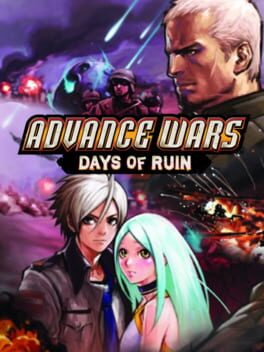It really is quite something to witness a franchise throw out everything its well received predecessor had done just three years before. Compared to Dual Strike, Days of Ruin offers a more balanced and less wacky take on the franchise's mechanics. CO powers are nerfed substantially, and with the abandonment of the dual screen gimmicks, no longer provide an extra turn through the CO Swap systems. Units introduced in Dual Strike are a given similar treatment, with the megatank returning in a weaker form, and the neo-tank, piperunner, oozium, stealth bomber and black boat being entirely absent, leading to a slimmer range of tactical scenarios but a greater emphasis on engaging with the bread and butter of the air, land, and sea fronts that Advance Wars combat revolves around. The new units, which are the anti-tank cannons, the duster plane, and the aircraft carrier, add additional layers of strategy to these fronts by fulfilling multiple functions. Anti-tank units attack from range but can still defend themselves in direct assault, duster planes can attack land and sea units, and carriers create a mobile production capacity while creating seaplanes, which can attack almost any unit. Paired with level design that is tighter and more focused, it comes across as though Intelligent Systems felt that the series got away from itself and needed to return to the basics as it were.
Of course, there’s another ambition that these changes are in service of, and it’s the readily apparent pivot in tone that this reboot undertakes. Days of Ruin is concerned with what the question looks like in a war without law, and to visualize that it takes to anime character designs and a color palette consisting of a dirge of gray and brown, in stark contrast to the bright and poppy cartoon fare that the series is known for. While the very premise of these games necessitates a degree of cynicism in the approach to such a question, as without a war there’s no game to play, but I did appreciate that the visual novel sequences did present some optimism towards groups of people working toward a common goal without a state structure. Still this is undermined by the story’s turn toward an one dimensional villain and a healthy dose of sci-fi genre nonsense. Compared to the original Advance Wars, the text is more interesting, but the subtext has lost its delightful idiosyncrasies, but still, I do appreciate how tight the tactics on display are here.
Of course, there’s another ambition that these changes are in service of, and it’s the readily apparent pivot in tone that this reboot undertakes. Days of Ruin is concerned with what the question looks like in a war without law, and to visualize that it takes to anime character designs and a color palette consisting of a dirge of gray and brown, in stark contrast to the bright and poppy cartoon fare that the series is known for. While the very premise of these games necessitates a degree of cynicism in the approach to such a question, as without a war there’s no game to play, but I did appreciate that the visual novel sequences did present some optimism towards groups of people working toward a common goal without a state structure. Still this is undermined by the story’s turn toward an one dimensional villain and a healthy dose of sci-fi genre nonsense. Compared to the original Advance Wars, the text is more interesting, but the subtext has lost its delightful idiosyncrasies, but still, I do appreciate how tight the tactics on display are here.
